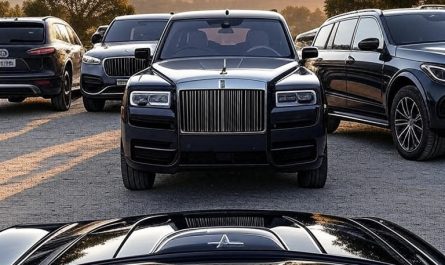The 2026 Tesla Model Y is not just another electric vehicle—it’s a practical, tech-forward, and cost-saving SUV that continues to raise the bar in the EV world. After daily driving it for one full month, I’ve had the chance to explore everything from performance and comfort to cost and features. This 2026 Tesla Model Y review is based on real-world usage, including a direct comparison with gas-powered cars like the Toyota Prius and luxury SUVs like the BMW X5. I’ll also break down the financing, insurance, charging, and every detail that buyers need to know before making the switch to a Tesla.

Why I Switched to the 2026 Model Y
I bought the all-new 2026 Tesla Model Y Junifer after going through a frustrating experience with a 2024 BMW X5 50e. That vehicle ended up being a buyback due to multiple mechanical failures and dishonest dealership behaviour. I had to dispute a $5,000 deposit through my credit card company just to recover it. After owning other Teslas in the past, I realized how much simpler and more efficient the entire process was. This time, I went all in on the Model Y, and it’s already proving to be a better value.
Financing, Insurance, and Overall Costs
I decided to finance the Model Y using Tesla’s in-house financing to test the accuracy of their calculator. The tool turned out to be nearly perfect. I selected an 84-month term with a 6.4% APR. My monthly payment is $570, and I placed $10,000 down. The total invoice, including taxes and fees, was $56,571.80. What surprised me most was the insurance savings. While my BMW used to cost $320 per month to insure, the Model Y costs just $190 per month with Tesla Insurance—saving me $130 every month.
| Category | Amount |
|---|---|
| Down Payment | $10,000 |
| Monthly Payment | $570 |
| Insurance (Monthly) | $190 |
| APR | 6.4% |
| Loan Term | 84 Months |
| Total Price (with tax) | $56,571.80 |
Comparing the Model Y to the Toyota Prius
Before finalizing my purchase, I seriously considered the 2025 Toyota Prius. While the Prius is fuel-efficient and reliable, the Model Y made more sense when comparing features, space, and overall value. The Prius lacks the performance and advanced features that come standard in the Tesla.
| Feature | 2026 Tesla Model Y | 2025 Toyota Prius |
|---|---|---|
| 0-60 MPH Acceleration | Low 5 seconds | ~7 seconds |
| Cargo Space (Max) | 75 cu ft | 50 cu ft |
| Real-World Range | 300 miles | 640 miles (gas) |
| Interior Technology | Advanced | Basic |
| AWD Standard | Yes | Optional |
The Model Y offers nearly 50% more cargo space and much better performance, making it ideal for long road trips, weekend travel, and daily commutes.
Daily Driving, Charging, and Range Experience
I live in Northern California, where gas prices can hit $5–$8 per gallon. With my home solar system, I charge the Model Y at no additional fuel cost. For longer trips, I use Tesla’s Supercharger network, where the average cost is about $0.44 per kWh. Charging from 10% to 80% usually takes just 20–25 minutes.
The real-world range is close to 300 miles, depending on how fast you’re driving. Even during heavy traffic and high-speed freeway travel, I consistently got around 280–300 miles on a full charge. I’ve never had to wait more than five minutes at a charging station.
Interior Comfort and Tech Improvements
Tesla has made big improvements in build quality. Unlike my older Teslas, the 2026 Model Y had no panel gap issues. The interior is more premium than ever, featuring soft-touch plastics, an upgraded sound system with a subwoofer, and heated and ventilated seats.
Tesla also added more luxury-level tech, including:
- Swiveling air vents
- Rear seat recline controls
- Digital seat adjustments from the center screen
- Rear touchscreen for passengers
- Ultra-wideband phone key for automatic unlocking
These features make the Model Y feel like a premium SUV, not just an EV.
Real-World Performance and Driving Feel
Driving the 2026 Model Y is smooth, powerful, and responsive. It accelerates from 0 to 60 mph in the low 5-second range, and that’s without the performance upgrade. I chose the 19-inch wheels for a better range and softer ride, and they also cost less to replace.
Suspension quality has improved over earlier models, handling bumps well without the need for air suspension. For daily driving, I don’t miss the gas-powered engine at all.
Autopilot and Safety Features
Although I didn’t purchase Full Self-Driving (FSD), I did test it during a free trial. It works great in unfamiliar areas, navigating traffic and complex roads with ease. However, it’s not perfect—sometimes making awkward lane choices or getting too close to construction cones.
For me, the standard autopilot is enough. It keeps the car centered and matches the speed of traffic, perfect for long commutes or heavy traffic.
Cargo and Usability
The Model Y offers more cargo space than many full-size SUVs, including the BMW X5. With all seats folded down, I can fit everything from travel gear to emergency tools. There’s even an underground storage area in the trunk and additional side compartments.
I also added several Tesla accessories like floor mats, windshield protection film, mud flaps, and a roof sunshade. These upgrades make the vehicle easier to maintain and more comfortable during hot weather.
Final Verdict: Is the Model Y Worth It?
After one month of owning and driving the 2026 Tesla Model Y, I can say with full confidence that it’s an incredible value. This EV gives you the tech, performance, and space of a luxury SUV without the high cost of fuel and traditional maintenance. It’s basically a Prius on steroids, offering better acceleration, more tech, and the freedom to drive off-grid with solar charging.
If you’re thinking about making the switch to electric, this car is an excellent place to start. With the federal EV tax credit, lower insurance, and minimal maintenance, the savings add up quickly. Combine that with Tesla’s continuous software improvements, and you’re buying more than just a car you’re buying into a better driving future.


